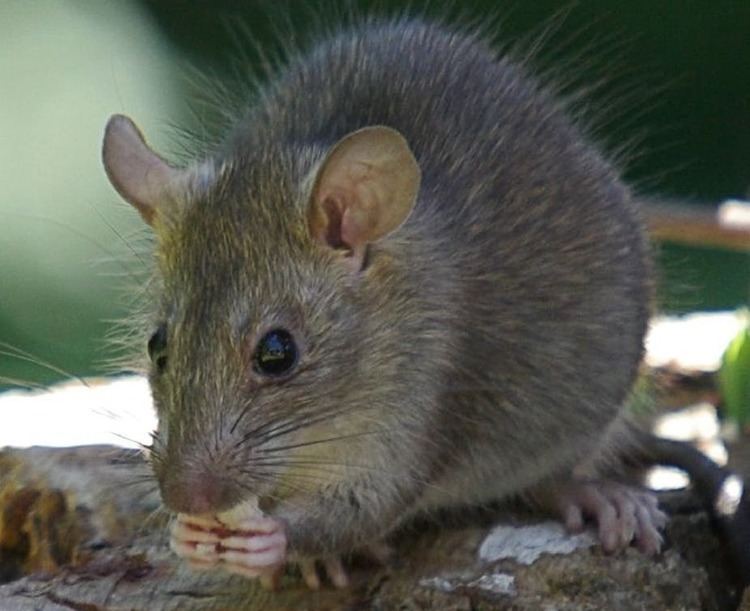 | ||
Introduced species and biodiversity
An introduced, alien, exotic, non-indigenous, or non-native species, or simply an introduction, is a species living outside its native distributional range, which has arrived there by human activity, either deliberate or accidental. Non-native species can have various effects on the local ecosystem. Introduced species that become established and spread beyond the place of introduction are called invasive species. Some have a negative effect on a local ecosystem. Some introduced species may have no negative effect or only minor impact. Some species have been introduced intentionally to combat pests. They are called biocontrols and may be regarded as beneficial as an alternative to pesticides in agriculture for example. In some instances the potential for being beneficial or detrimental in the long run remains unknown. A list of some introduced species is given in a separate article.
Contents
- Introduced species and biodiversity
- Hands like houses introduced species official music video
- Terminology
- Nature of introductions
- Intentional introductions
- Unintentional introductions
- Introduced plants
- Introduced animals
- Most commonly introduced species
- Invasive exotic diseases
- Introduced species on islands
- New Zealand
- Introduced species on a planetary body
- References
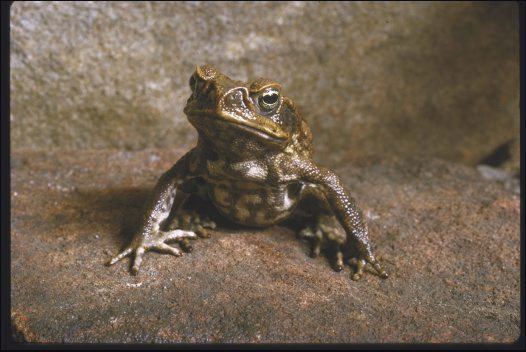
The effects of introduced species on natural environments have gained much scrutiny from scientists, governments, farmers and others.
Hands like houses introduced species official music video
Terminology

The terminology associated with introduced species is now in flux for various reasons. Other terms with somewhat similar meanings) with introduced are acclimatized, adventive, naturalized, and immigrant but those terms refer to a subset of introduced species: those that have become established and can reproduce without human assistance. The term invasive refers only to those species that become established and spread beyond the place of introduction. For practical purposes, this term is applied only to invasive species that cause damage.
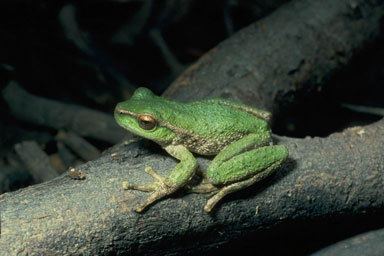
In the broadest and most widely used sense, an introduced species is synonymous with non-native and therefore applies as well to most garden and farm organisms; these adequately fit the basic definition given above. However, some sources add to that basic definition "and are now reproducing in the wild," which removes from consideration as introduced all of those species raised or grown in gardens or farms that do not survive without tending by people. With respect to plants, these latter are in this case defined as either ornamental or cultivated plants.
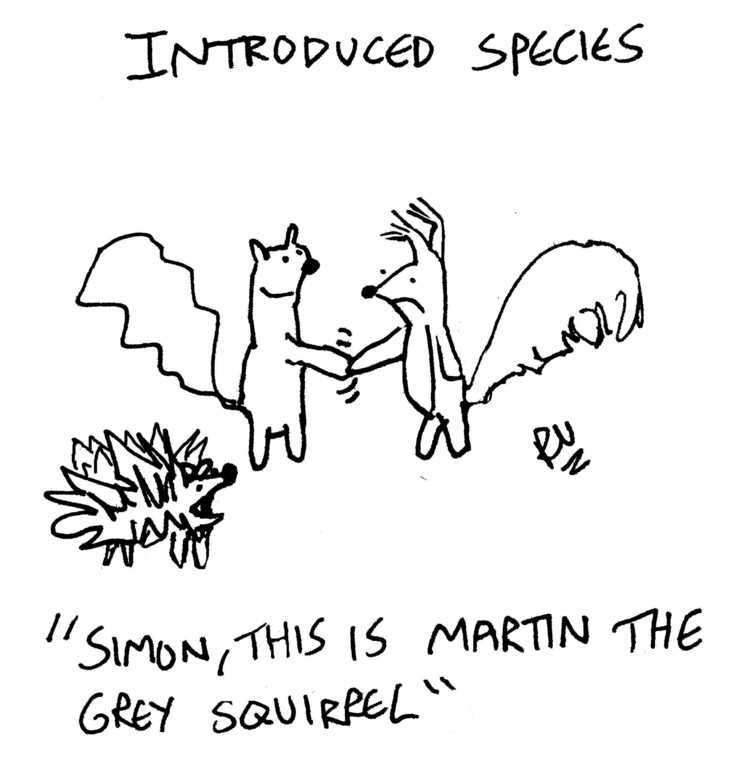
The following definition from the United States Environmental Protection Agency (EPA), although perhaps lacking ecological sophistication, is more typical: introduced species "A species that has been intentionally or inadvertently brought into a region or area. Also called an exotic or non-native species." Introduction of a species outside its native range is all that is required to be qualified as an "introduced species" such that one can distinguish between introduced species that may not occur except in cultivation, under domestication or captivity whereas others become established outside their native range and reproduce without human assistance. Such species might be termed "naturalized", "established", "wild non-native species". If they further spread beyond the place of introduction they are called "invasive". The transition from introduction, to establishment and to invasion has been described in the context of plants. Introduced species are essentially "non-native" species. Invasive species are those introduced species that spreadwidely or quickly and cause harm, be that to the environment, human health, other valued resources or the economy. There have been calls from scientists to consider a species "invasive" only in terms of their spread and reproduction rather than the harm they may cause.
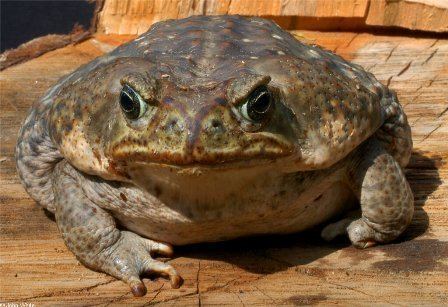
According to a practical definition, an invasive species is one that has been introduced and become a pest in its new location, spreading (invading) by natural means. The term is used to imply both a sense of urgency and actual or potential harm. For example, U.S. Executive Order 13112 (1999) defines "invasive species" as "an alien species whose introduction does or is likely to cause economic or environmental harm or harm to human health". The biological definition of invasive species, on the other hand, makes no reference to the harm they may cause, only to the fact that they spread beyond the area of original introduction.
Although some argue that "invasive" is a loaded word and harm is difficult to define, the fact of the matter is that organisms have and continue to be introduced to areas in which they are not native, sometimes with but usually without much regard to the harm that could result.
From a regulatory perspective, it is neither desirable nor practical to list as undesirable or outright ban all non-native species (although the State of Hawaii has adopted an approach that comes close to this). Regulations require a definitional distinction between non-natives that are deemed especially onerous and all others. Introduced pest species that are officially listed as invasive, best fit the definition of an invasive species. Early detection and rapid response is the most effective strategy for regulating a pest species and reducing economic and environmental impacts of an introduction
In Great Britain, the Wildlife and Countryside Act 1981 prevents the introduction of any animal not naturally occurring in the wild or any of a list of both animals or plants introduced previously and proved to be invasive.
Nature of introductions
By definition, a species is considered "introduced" when its transport into an area outside of its native range is human mediated. Introductions by humans can be described as either intentional or accidental. Intentional introductions have been motivated by individuals or groups who either (1) believe that the newly introduced species will be in some way beneficial to humans in its new location or, (2) as is the case with pythons in the Everglades, species are introduced intentionally but with no regard to the potential impact. Unintentional or accidental introductions are most often a byproduct of human movements, and are thus unbound to human motivations. Subsequent range expansion of introduced species may or may not involve human activity.
Intentional introductions
Species that humans intentionally transport to new regions can subsequently become successfully established in two ways. In the first case, organisms are purposely released for establishment in the wild. It is sometimes difficult to predict whether a species will become established upon release, and if not initially successful, humans have made repeated introductions to improve the probability that the species will survive and eventually reproduce in the wild. In these cases it is clear that the introduction is directly facilitated by human desires.
In the second case, species intentionally transported into a new region may escape from captive or cultivated populations and subsequently establish independent breeding populations. Escaped organisms are included in this category because their initial transport to a new region is human motivated.
Perhaps the most common motivation for introducing a species into a new place is that of economic gain. Examples of species introduced for the purposes of benefiting agriculture, aquaculture or other economic activities are widespread. Eurasian carp was first introduced to the United States as a potential food source. The apple snail was released in Southeast Asia with the intent that it be used as a protein source, and subsequently to places like Hawaii to establish a food industry. In Alaska, foxes were introduced to many islands to create new populations for the fur trade. About twenty species of African and European dung beetles have established themselves in Australia after deliberate introduction by the Australian Dung Beetle Project in an effort to reduce the impact of livestock manure. The timber industry promoted the introduction of Monterey pine (Pinus radiata) from California to Australia and New Zealand as a commercial timber crop. These examples represent only a small subsample of species that have been moved by humans for economic interests.
Introductions have also been important in supporting recreation activities or otherwise increasing human enjoyment. Numerous fish and game animals have been introduced for the purposes of sport fishing and hunting (Earthworms as invasive species). The introduced amphibian (Ambystoma tigrinum) that threatens the endemic California salamander (Ambystoma californiense) was introduced to California as a source of bait for fishermen. Pet animals have also been frequently transported into new areas by humans, and their escapes have resulted in several successful introductions, such as those of feral cats and parrots.
Many plants have been introduced with the intent of aesthetically improving public recreation areas or private properties. The introduced Norway maple for example occupies a prominent status in many of Canada's parks. The transport of ornamental plants for landscaping use has and continues to be a source of many introductions. Some of these species have escaped horticultural control and become invasive. Notable examples include water hyacinth, salt cedar, and purple loosestrife.
In other cases, species have been translocated for reasons of "cultural nostalgia," which refers to instances in which humans who have migrated to new regions have intentionally brought with them familiar organisms. Famous examples include the introduction of starlings to North America by Englishman Eugene Schieffelin, a lover of the works of Shakespeare and the chairman of the American Acclimatization Society, who, it is rumoured, wanted to introduce all of the birds mentioned in Shakespeare's plays into the United States. He deliberately released eighty starlings into Central Park in New York City in 1890, and another forty in 1891.
Yet another prominent example is the introduction of the European rabbit to Australia by one Thomas Austin, a British landowner who had the rabbits released on his estate in Victoria because he missed hunting them. A more recent example is the introduction of the common wall lizard to North America by a Cincinnati boy, George Rau, around 1950 after a family vacation to Italy.
Intentional introductions have also been undertaken with the aim of ameliorating environmental problems. A number of fast spreading plants such as garlic mustard and kudzu have been introduced as a means of erosion control. Other species have been introduced as biological control agents to control invasive species and involves the purposeful introduction of a natural enemy of the target species with the intention of reducing its numbers or controlling its spread.
A special case of introduction is the reintroduction of a species that has become locally endangered or extinct, done in the interests of conservation. Examples of successful reintroductions include wolves to Yellowstone National Park in the U.S., and the red kite to parts of England and Scotland. Introductions or translocations of species have also been proposed in the interest of genetic conservation, which advocates the introduction of new individuals into genetically depauperate populations of endangered or threatened species.
The above examples highlight the intent of humans to introduce species as a means of incurring some benefit. While these benefits have in some cases been realized, introductions have also resulted in unforeseen costs, particularly when introduced species take on characteristics of invasive species.
Non-native species can become such a common part of an environment, culture, and even diet that little thought is given to their geographic origin. For example, soybeans, kiwi fruit, wheat and all livestock except the American bison and the turkey are non-native species to North America. Collectively, non-native crops and livestock comprise 98% of US food. These and other benefits from non-natives are so vast that, according to the Congressional Research Service, they probably exceed the costs.
Unintentional introductions
Unintentional introductions occur when species are transported by human vectors. For example, three species of rat (the black, Norway and Polynesian) have spread to most of the world as hitchhikers on ships. There are also numerous examples of marine organisms being transported in ballast water, one being the zebra mussel. Over 200 species have been introduced to the San Francisco Bay in this manner making it the most heavily invaded estuary in the world. Increasing rates of human travel are providing accelerating opportunities for species to be accidentally transported into areas in which they are not considered native. There is also the accidental release of the Africanized honey bees (AHB), known colloquially as "killer bees" or Africanized bee to Brazil in 1957 and the Asian carps to the United States. The insect commonly known as the brown marmorated stink bug (Halyomorpha halys) was introduced accidentally in Pennsylvania. Another form of unintentional introductions is when an intentionally introduced plant carries a parasite or herbivore with it. Some become invasive, for example the oleander aphid, accidentally introduced with the ornamental plant, oleander.
Introduced plants
Many non-native plants have been introduced into new territories, initially as either ornamental plants or for erosion control, stock feed, or forestry. Whether an exotic will become an invasive species is seldom understood in the beginning, and many non-native ornamentals languish in the trade for years before suddenly naturalizing and becoming invasive.
Peaches, for example, originated in China, and have been carried to much of the populated world. Tomatoes are native to the Andes. Squash (pumpkins), maize (corn), and tobacco are native to the Americas, but were introduced to the Old World. Many introduced species require continued human intervention to survive in the new environment. Others may become feral, but do not seriously compete with natives, but simply increase the biodiversity of the area.
Dandelions are also introduced species to North America.
A very troublesome marine species in southern Europe is the seaweed Caulerpa taxifolia. Caulerpa was first observed in the Mediterranean Sea in 1984, off the coast of Monaco. By 1997, it had covered some 50 km². It has a strong potential to overgrow natural biotopes, and represents a major risk for sublittoral ecosystems. The origin of the alga in the Mediterranean was thought to be either as a migration through the Suez Canal from the Red Sea, or as an accidental introduction from an aquarium. Another troublesome plant species is the terrestrial plant Phyla canescens, which was intentionally introduced into many countries in North America, Europe, and Africa as an ornamental plant. This species has become invasive in Australia, where it threatens native rare plants and causes erosion and soil slumping around river banks. It has also become invasive in France where it has been listed as an invasive plant species of concern in the Mediterranean region, where it can form monocultures that threaten critical conservation habitats.
Japanese knotweed grows profusely in many nations. Human beings introduced it into many places in the 19th century. It is a source of resveratrol, a dietary supplement.
Introduced animals
Bear in mind that most introduced species do not become invasive. Examples of introduced animals that have become invasive include the gypsy moth in eastern North America, the zebra mussel and alewife in the Great Lakes, the Canada goose and gray squirrel in Europe, the muskrat in Europe and Asia, the cane toad and red fox in Australia, nutria in North America, Eurasia, and Africa, and the common brushtail possum in New Zealand. In Taiwan, the success of introduced bird species was related to their native range size and body size; larger species with larger native range sizes were found to have larger introduced range sizes.
Most commonly introduced species
Some species, such as the brown rat, house sparrow, ring-necked pheasant and European starling, have been introduced very widely. In addition there are some agricultural and pet species that frequently become feral; these include rabbits, dogs, goats, fish, pigs and cats.
Invasive exotic diseases
History is rife with the spread of exotic diseases, such as the introduction of smallpox into the indigenous peoples of the Americas by the Spanish, where it obliterated entire populations of indigenous civilizations before they were ever even seen by Europeans.
Problematic exotic disease introductions in the past century or so include the chestnut blight which has almost eliminated the American chestnut tree from its forest habitat, and Dutch elm disease, which has severely reduced the American elm trees in forests and cities.
Diseases may also be vectored by invasive insects such as the Asian citrus psyllid and the bacterial disease citrus greening.
Introduced species on islands
Perhaps the best place to study problems associated with introduced species is on islands. Depending upon the isolation (how far an island is located from continental biotas), native island biological communities may be poorly adapted to the threat posed by exotic introductions. Often this can mean that no natural predator of an introduced species is present, and the non-native spreads uncontrollably into open or occupied niche.
An additional problem is that birds native to small islands may have become flightless because of the absence of predators prior to introductions and cannot readily escape danger. The tendency of rails in particular to evolve flightless forms on islands has led to the disproportionate number of extinctions in that family.
The field of island restoration has developed as a field of conservation biology and ecological restoration, a great deal of which deals with the eradication of introduced species.
New Zealand
In New Zealand the largest commercial crop is Pinus radiata, the native Californian Monterey pine tree, which grows as well in New Zealand as in California. However, the pine forests are also occupied by deer from North America and Europe and by possums from Australia. All are exotic species and all have thrived in the New Zealand environment. The pines are seen as beneficial while the deer and possums are regarded as serious pests.
Common gorse, originally a hedge plant in Britain, was introduced to New Zealand for the same purpose. Like the Monterey pine, it has shown a favour to its new climate. It is, however, regarded as a noxious plant that threatens to obliterate native plants in much of the country and is hence routinely eradicated, though it can also provide a nursery environment for native plants to reestablish themselves.
Rabbits, introduced as a food source by sailors in the 1800s, have become a severe nuisance to farmers, notably in the South Island. The myxomatosis virus was illegally imported and illegally released, but it had little lasting effect upon the rabbit population other than to make it more resistant to the virus.
Cats, brought by the Māori and later by Europeans, have had a devastating effect upon the native birdlife, particularly as many New Zealand birds are flightless. Feral cats and dogs which were originally brought as pets are also known to kill large numbers of birds. A recent (2006) study in the South Island has shown that even domestic cats with a ready supply of food from their owners may kill hundreds of birds in a year, including natives.
Sparrows, which were brought to control insects upon the introduced grain crops, have displaced native birds as have rainbow lorikeets and cockatoos (both from Australia) which fly free around areas west of Auckland City such as the Waitakere Ranges.
In much of New Zealand, the Australian black swan has effectively eliminated the existence of the previously introduced mute swan.
Two notable varieties of spiders have also been introduced: the white tail spider and the redback spider. Both may have arrived inside shipments of fruit. Until then, the only spider (and the only poisonous animal) dangerous to humans was the native katipo, which is very similar to the redback and interbreed with the more aggressive Australian variety.
Introduced species on a planetary body
It has been hypothesized that invasive species of microbial life could contaminate a planetary body after the former is introduced by a space probe or spacecraft, either deliberately or unintentionally.
